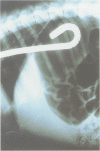Abstract
Our study was designed to ascertain whether a flexible videoscope could be used to efficiently monitor ulcers of the pars esophagea in a large group of grower-finisher swine. Gastroscopy was performed on 2 separate occasions in 32 pigs following anesthesia with intravenous pentobarbital, and ulcers of the pars esophagea were subjectively graded. The pigs were then necropsied. Grades from the second endoscopic examination were compared for agreement with grades derived from gross inspection of the pars esophagea at necropsy, and with grades derived from histopathologic examination of sections of the same region. The pars esophagea was adequately visualized in all endoscopic examinations. The average duration of each examination, from anesthetic induction, was approximately 8 min. Gastroscopy permitted appreciation of a wide range of focal and diffuse superficial and deep ulcerative lesions of the pars esophagea, but failed to unequivocally identify parakeratosis of the pars esophagea. Agreement between endoscopic and subsequent necroscopic and histopathologic gradings of ulcerations was poor. We concluded that the use of a flexible videoscope permitted rapid inspection of the pars esophagea, and was therefore a practical method of experimentally monitoring the progression of spontaneous gastric ulcers in pigs. We also postulated that the poor agreement between endoscopic and postmortem findings occurred because endoscopy was possibly more sensitive at detecting small and superficial ulcerations. However, further studies are needed to verify the accuracy of endoscopic diagnosis of gastric ulcers in the live pig.
Full text
PDF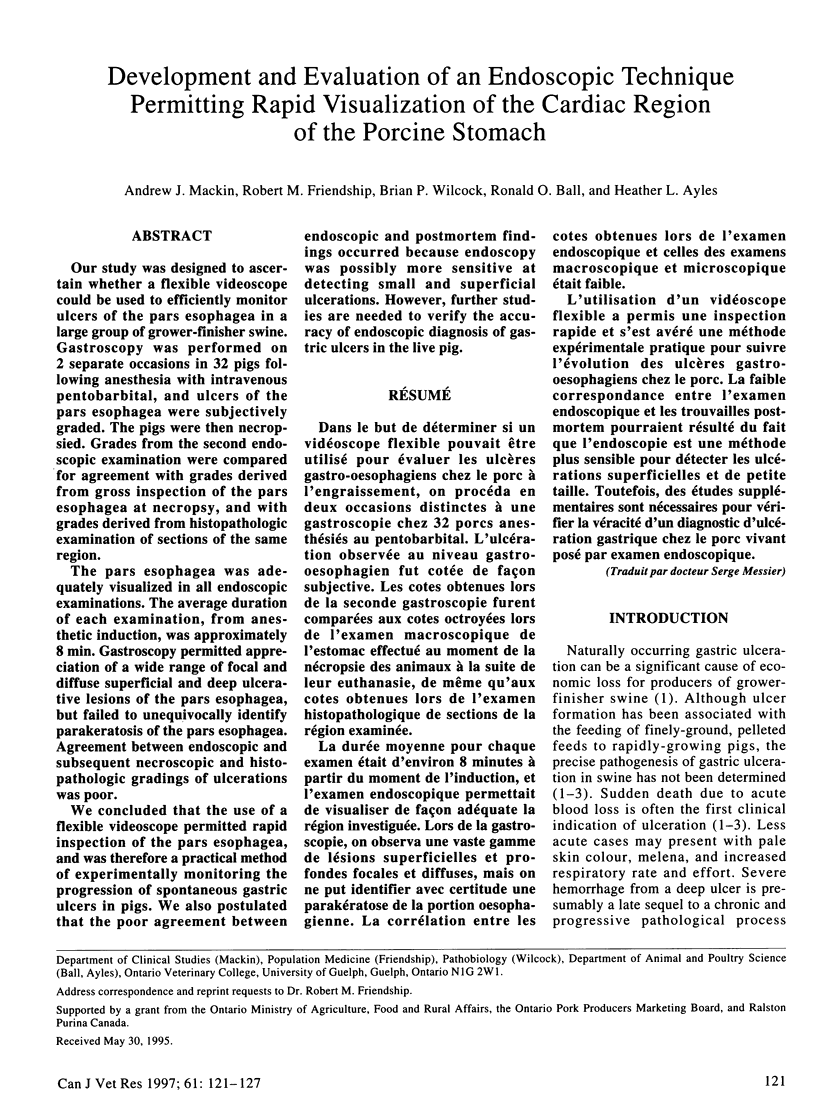
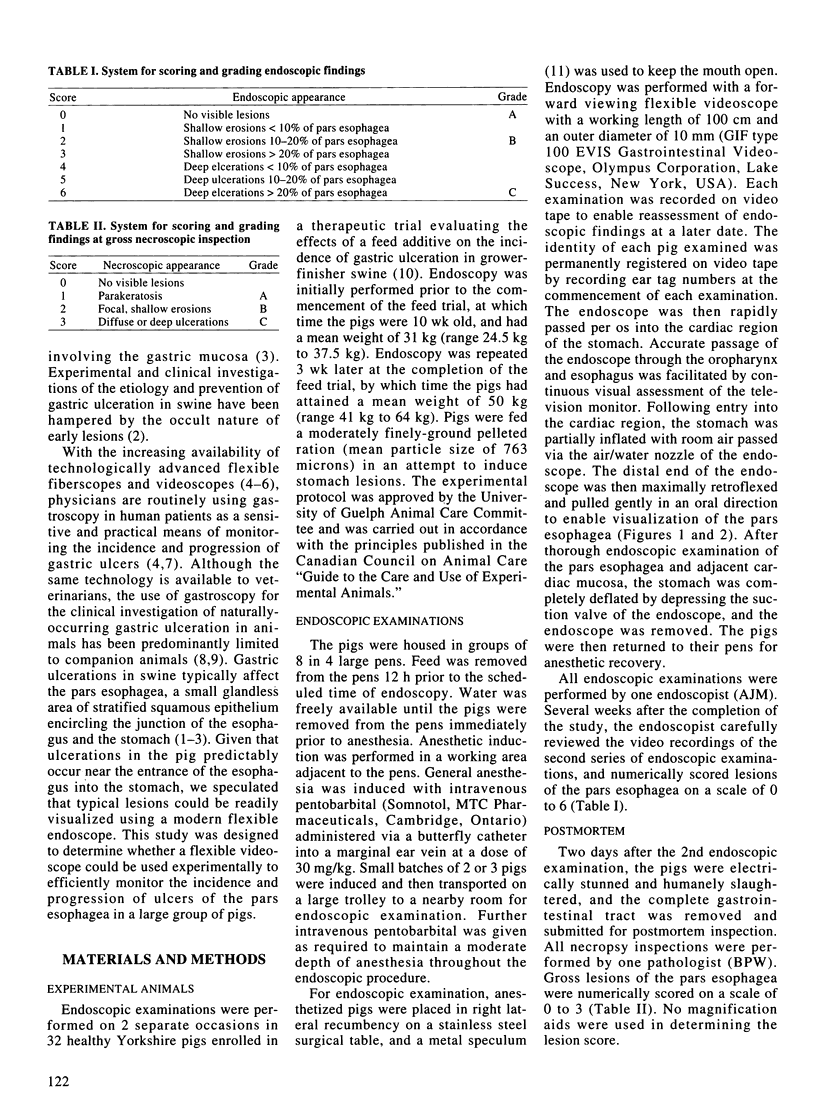
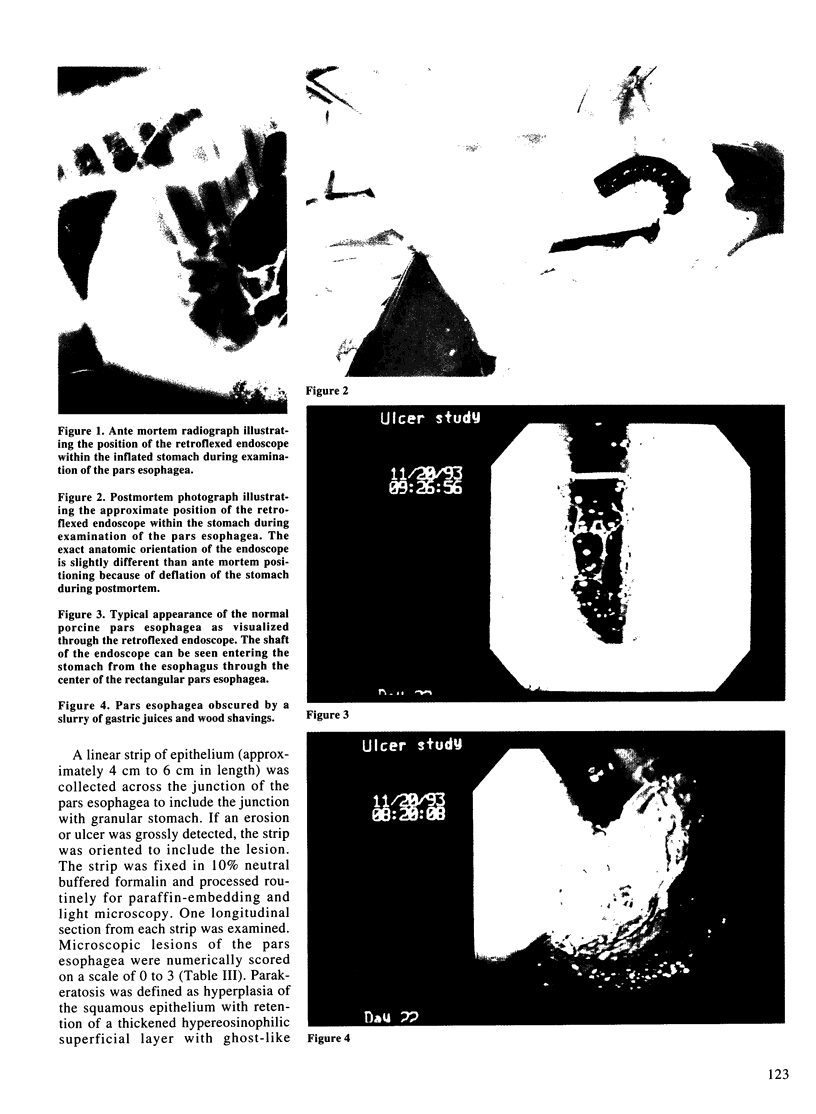
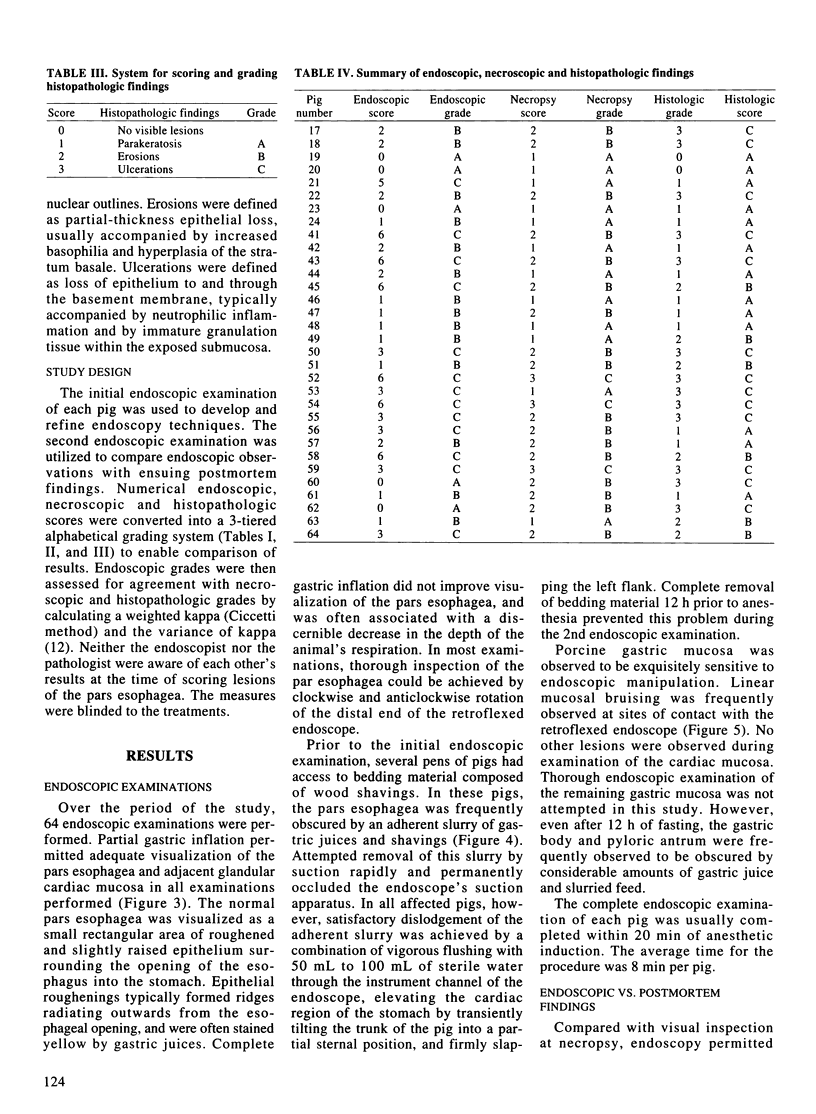
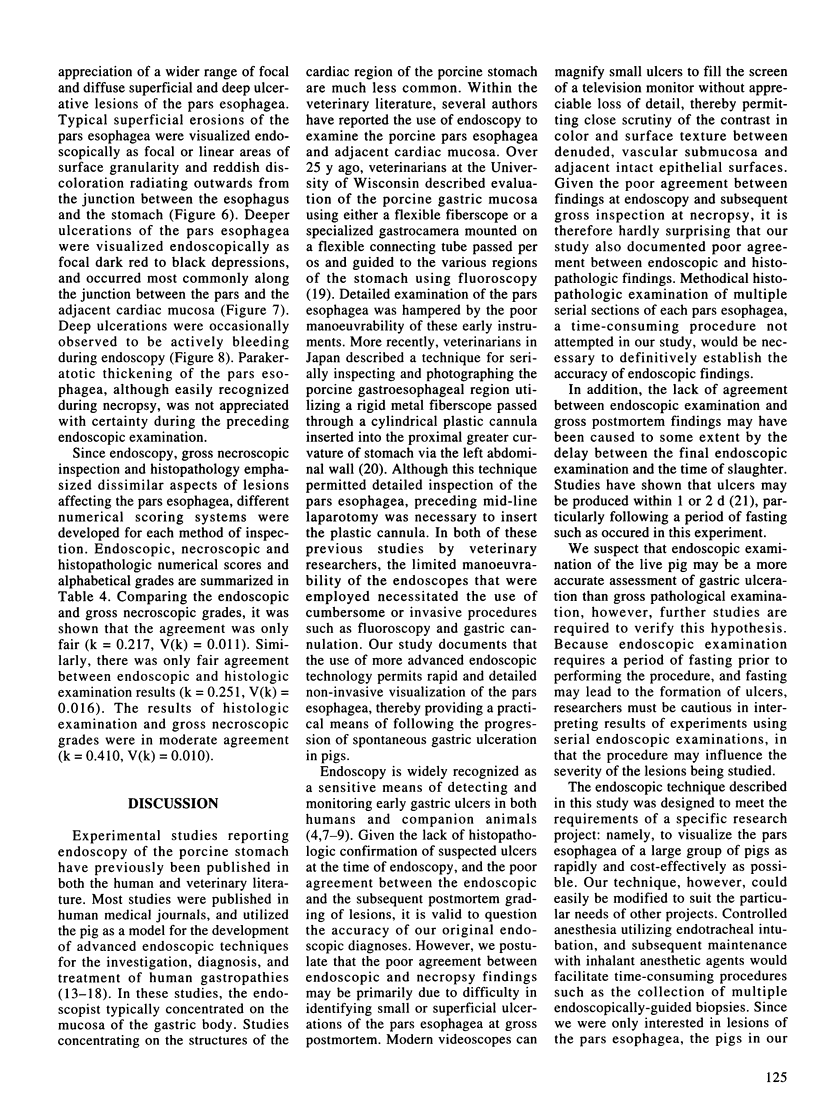
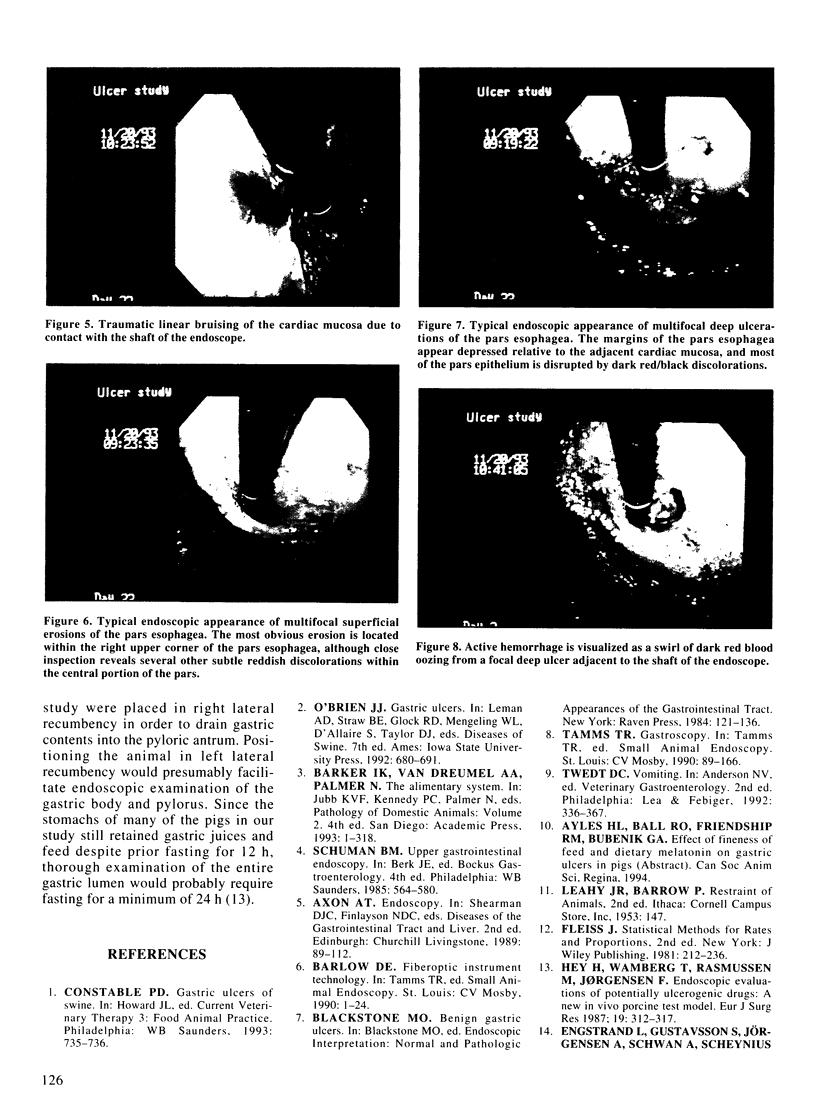
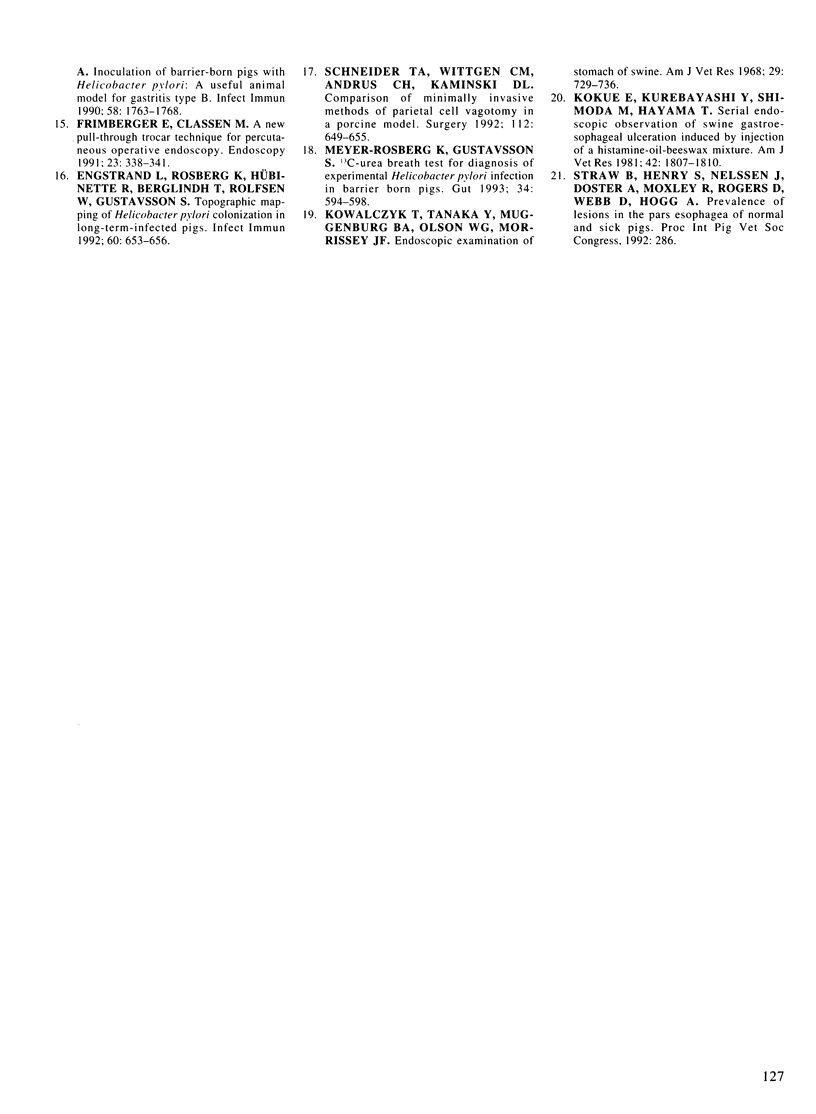
Images in this article
Selected References
These references are in PubMed. This may not be the complete list of references from this article.
- Engstrand L., Rosberg K., Hübinette R., Berglindh T., Rolfsen W., Gustavsson S. Topographic mapping of Helicobacter pylori colonization in long-term-infected pigs. Infect Immun. 1992 Feb;60(2):653–656. doi: 10.1128/iai.60.2.653-656.1992. [DOI] [PMC free article] [PubMed] [Google Scholar]
- Frimberger E., Classen M. A new pull-through trocar technique for percutaneous operative endoscopy. Endoscopy. 1991 Nov;23(6):338–341. doi: 10.1055/s-2007-1010711. [DOI] [PubMed] [Google Scholar]
- Hey H., Wamberg T., Rasmussen M., Jørgensen F. Endoscopic evaluations of potentially ulcerogenic drugs. A new in vivo porcine test model. Eur Surg Res. 1987;19(5):312–317. doi: 10.1159/000128715. [DOI] [PubMed] [Google Scholar]
- Kokue E., Kurebayashi Y., Shimoda M., Hayama T. Serial endoscopic observation of swine gastroesophageal ulceration induced by injection of a histamine-oil-beeswax mixture. Am J Vet Res. 1981 Oct;42(10):1807–1810. [PubMed] [Google Scholar]
- Kowalczyk T., Tanaka Y., Muggenburg B. A., Olson W. G., Morrissey J. F. Endoscopic examination of stomach of swine. Am J Vet Res. 1968 Mar;29(3):729–736. [PubMed] [Google Scholar]
- Meyer-Rosberg K., Gustavsson S. 13C-urea breath test for diagnosis of experimental Helicobacter pylori infection in barrier born pigs. Gut. 1993 May;34(5):594–598. doi: 10.1136/gut.34.5.594. [DOI] [PMC free article] [PubMed] [Google Scholar]
- Schneider T. A., 2nd, Wittgen C. M., Andrus C. H., Kaminski D. L. Comparison of minimally invasive methods of parietal cell vagotomy in a porcine model. Surgery. 1992 Oct;112(4):649–655. [PubMed] [Google Scholar]



